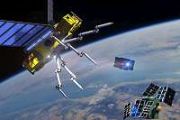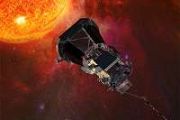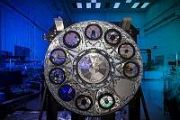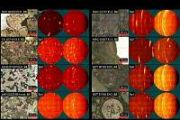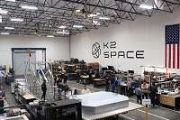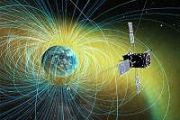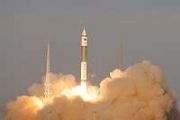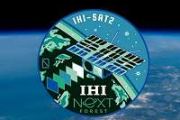
Copernical Team
Celebrating 50 years of ESA at Open Days 2025

SMOS adds long-term view on carbon stored in forests

Data from ESA’s Soil Moisture and Ocean Salinity (SMOS) mission can be used to estimate how much carbon is stored in forests – and a study has improved our understanding of how reliable this proxy is and how long-term datasets from SMOS can help us to monitor this valuable resource.
A supernova-rich spiral
 Image:
A supernova-rich spiral
Image:
A supernova-rich spiral Clouds force last-minute delay for astronaut launch to the International Space Station
This request seems a bit unusual, so we need to confirm that you're human. Please press and hold the button until it turns completely green. Thank you for your cooperation!
Press and hold the button
If you believe this is an error, please contact our support team.
185.132.36.159 : 1a1cb9bf-bb97-40e4-964f-b9322795
NASA installs key 'sunblock' shield on Roman Space Telescope
This request seems a bit unusual, so we need to confirm that you're human. Please press and hold the button until it turns completely green. Thank you for your cooperation!
Press and hold the button
If you believe this is an error, please contact our support team.
185.132.36.159 : 3aa680d0-a2e4-444d-9001-4d9af959
Russian space chief says agreed with NASA on ISS cooperation until 2028
This request seems a bit unusual, so we need to confirm that you're human. Please press and hold the button until it turns completely green. Thank you for your cooperation!
Press and hold the button
If you believe this is an error, please contact our support team.
185.132.36.159 : ebbb33bf-da33-4461-afe9-78bf3a34
Moonbound Artemis II astronauts stay focused despite NASA uncertainty
This request seems a bit unusual, so we need to confirm that you're human. Please press and hold the button until it turns completely green. Thank you for your cooperation!
Press and hold the button
If you believe this is an error, please contact our support team.
185.132.36.159 : d73d1211-8282-41d8-a657-1fa74eb2
Wildfires burn in northern Portugal
 Image:
Copernicus Sentinel-2 captured wildfires burning in northern Portugal on Wednesday, 30 July.
Image:
Copernicus Sentinel-2 captured wildfires burning in northern Portugal on Wednesday, 30 July. Radar satellite launched by India and NASA will track minuscule changes to Earth's land and ice
This request seems a bit unusual, so we need to confirm that you're human. Please press and hold the button until it turns completely green. Thank you for your cooperation!
Press and hold the button
If you believe this is an error, please contact our support team.
185.132.36.159 : ba2f31f1-1dec-4162-bae0-1b91502b
MicroCarb satellite launches to map global carbon dioxide emissions from space
 The MicroCarb satellite, developed by the French space agency CNES in partnership with the UK Space Agency, has been successfully launched from Europe's Spaceport in Kourou, French Guiana. As Europe's first mission dedicated to monitoring and mapping atmospheric carbon dioxide (CO2), MicroCarb aims to deliver high-precision measurements to better understand the sources and sinks of this critical
The MicroCarb satellite, developed by the French space agency CNES in partnership with the UK Space Agency, has been successfully launched from Europe's Spaceport in Kourou, French Guiana. As Europe's first mission dedicated to monitoring and mapping atmospheric carbon dioxide (CO2), MicroCarb aims to deliver high-precision measurements to better understand the sources and sinks of this critical 




